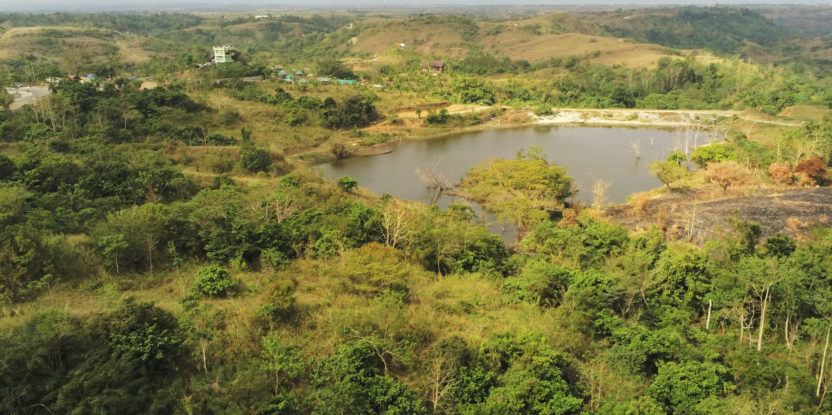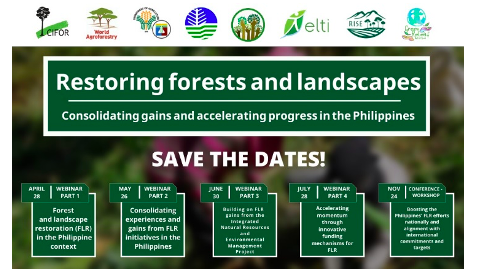
“I will be a guardian and restorer of this land and help the people living here do that,” said Loren Legarda in a call to citizens to cease deforestation and degradation of Philippine ecosystems and “build back better” in a green, sustainable manner.
Legarda, the deputy speaker of the Philippines House of Representatives, has a long history of supporting essential laws that have helped begin to turn the tide of environmental destruction wrought during the last century.
Early this year, she was instrumental in presenting to the House the Philippine Ecosystem and Natural Capital Accounting System bill, which, if passed would be a landmark natural capital accounting law factoring in the cost of using natural resources. Adding depreciation into the equation overrides the assumption that clean water, air, land and oceans are freely exploitable without negative social, environmental or economic impact.
“We will never be able to undertake restoration if the economic indicators we use value only the incomes and ignore the destruction of our natural capital in generating those revenues,” said Legarda, speaking at the first webinar on forest and landscape restoration in the Philippines. The event was attended by nearly 600 people from all corners of the country and around the world.
“The proposed law hopes to bring about a fundamental shift in how we see the world, how we understand our place in it, and how we value it. It corrects the misconception that we have to choose between the environment and the economy because it highlights the fact that our economy will only ever be as robust as our natural capital.”
Legarda is a keen advocate for the environment, also holding other influential roles, notably, as the U.N. Office for Disaster Risk Reduction’s Global Champion for Resilience, the U.N. Framework Convention on Climate Change’s National Adaptation Plan Champion, and as a Commissioner of the Global Commission on Adaptation.
Dennis Garrity, drylands ambassador for the U.N. Convention to Combat Desertification, agreed with Legarda and added to her call, urging a massive restoration movement to drive the Philippines, and the planet, to regreen.
“The great transition to an evergreen Earth is underway,” he said. “The Philippines can lead the way. Tree cover in the Philippines has been increasing over the last decade or so after large-scale destruction. Can this positive trend be accelerated? Could this be the basis for a national movement that mobilizes every community in every part of the country? Yes! Filipinos everywhere can rally to this goal.”
Marcial Amaro, Jr., assistant secretary for Policy, Planning and Foreign-assisted and Special Projects with the Philippine Department of Environment and Natural Resources, confirmed that 53 percent of the country’s total land area was supposedly devoted to forest cover.
“We gained, on average, 34,887 hectares per year from 2010 to 2015,” he said. “Forest cover in 2015 was an estimated 7 million hectares, of which 29 percent was closed forest, 67 percent open forest and 4.3 percent mangroves. Since 1961, nearly 2 million hectares have been reforested.”
But there were many challenges to continued, and accelerated, reforestation.
“The remaining areas are remote and difficult to access,” he said, “There are still conflicting policies. We have problems in some places with peace and order, with fire, pests and diseases. Water shortages are a problem, too, leading to low survival rates. We need to improve product development, marketing and transportation. So how can we accelerate restoration and maintain it? We need to find ways to strengthen livelihoods, increase monitoring, prioritize critical watersheds for enhancement of existing forest cover, recover easements, build more partnerships with the private and non-governmental sector, add value to products, install small dams, and create better and more accessible financial and insurance products.”
Robin Chazdon, professor of Ecology with the Tropical Forests and People Research Centre at Australia’s University of the Sunshine Coast, confirmed that restoration of forest landscapes is a process that unfolds over time, combining many practices, engaging local people, is based on socio-ecological principles and a departure from past practices, requiring long-term commitment and investment.
“The core principles are a focus on landscapes, to restore multiple functions, engage diverse groups of people in support of participatory governance, maintain and enhance natural ecosystems, tailor to local contexts using varied approaches, and manage adaptively for long-term resilience,” she said.
She stressed that mediating the trade-offs of competing demands using a systems’ approach is the key to effective and long-lasting restoration.
The foundation of all restoration is soil, pointed out Samuel Contreras, chief agriculturalist and head of the Soil Conservation and Management Division at the Philippine Department of Agriculture, but about 11 million hectares of the country’s total land area featured degraded soils.
“We have set a land degradation neutrality target of 4.05 million hectares or 60 percent of degraded forest land by 2030 and 2.2 million hectares of farmland by 2040,” he said. “Forests and trees are at the center of forest landscape restoration and land degradation neutrality. But we have many challenges, such as a need for enabling national policy; greater building of capacity in development, technology, innovation and knowledge, including high-resolution datasets; and more transformative programs.”
Legarda noted other challenges and said that “we need to strategically select around 30 percent of our 30 million hectares and stand our ground. Already, our protected areas are full of people, almost urbanized. We need to determine what level of restoration we are aiming for because it is possible to live inside a protected area and still restore it.
“The climate crisis and unabated biodiversity loss only further increase the risk of future pandemics that would cause even greater damage on economies and take even more lives if we fail to act now.
“Restoration action is always local. We succeed and fail depending on how well we do at the level of communities, which are at the frontlines.”
You can watch the recording of the webinar here.
This webinar was co-organized by the Center for International Forestry Research and World Agroforestry (CIFOR-ICRAF); Bureau of Soils and Water Management of the Department of Agriculture; Forest Management Bureau of the Department of Environment and Natural Resources; Yale Environmental Leadership and Training Initiative; Restoration Initiative for Sustainable Ecosystems; and the Green Releaf Initiative.

SECOND WEBINAR: Consolidating experiences and gains from forest and landscape restoration initiatives in the Philippines
The second webinar will showcase successful interventions in the Philippines by INGOs, NGOs, private sector, local governments and civil society groups, among others. The interventions featured will include technologies, practices and services that restore degraded landscapes. Register
We want you to share Forests News content, which is licensed under Creative Commons Attribution-NonCommercial-ShareAlike 4.0 International (CC BY-NC-SA 4.0). This means you are free to redistribute our material for non-commercial purposes. All we ask is that you give Forests News appropriate credit and link to the original Forests News content, indicate if changes were made, and distribute your contributions under the same Creative Commons license. You must notify Forests News if you repost, reprint or reuse our materials by contacting forestsnews@cifor-icraf.org.